 W
WSuper Select is the brand name of a four-wheel drive system produced by Mitsubishi Motors, used worldwide except for North America, where it was initially known as Active-Trac. It was first introduced in 1991 with the then-new second generation of the Mitsubishi Pajero.
 W
WAutomated manual transmission (AMT), also known as a clutchless manual, denotes a type of multi-speed motor vehicle transmission system that is closely based on the mechanical design and internal build of a conventional manual transmission, and uses automation to operate either the clutch, and/or the gear shifting.
 W
WAn automatic transmission is a multi-speed transmission used in motor vehicles that does not require any driver input to change gears under normal driving conditions. It typically includes a transmission, axle, and differential in one integrated assembly, thus technically becoming a transaxle.
 W
WChain drive is a way of transmitting mechanical power from one place to another. It is often used to convey power to the wheels of a vehicle, particularly bicycles and motorcycles. It is also used in a wide variety of machines besides vehicles.
 W
WA clutch is a mechanical device that engages and disengages power transmission, especially from a drive shaft to a driven shaft. The clutch acts as a mechanical linkage between the engine and transmission; and briefly disconnects, or separates the engine from the drivetrain, and therefore the drive wheels, whenever the pedal is depressed, allowing the driver to smoothly change gears.
 W
WA cone clutch serves the same purpose as a disk or plate clutch. However, instead of mating two spinning disks, the cone clutch uses two conical surfaces to transmit torque by friction.
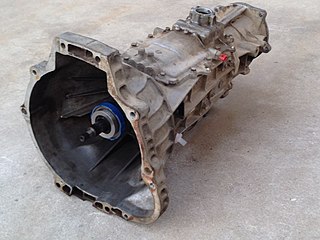 W
WA manual transmission is a multi-speed motor vehicle transmission system, where gear changes require the driver to manually select the gears by operating a gear stick and clutch.
 W
WConstant-velocity joints allow a drive shaft to transmit power through a variable angle, at constant rotational speed, without an appreciable increase in friction or play. They are mainly used in front wheel drive vehicles. Modern rear wheel drive cars with independent rear suspension typically use CV joints at the ends of the rear axle halfshafts and increasingly use them on the drive shaft.
 W
WThe Constantinesco was a Romanian automobile produced from 1926 to 1928. It was built by George Constantinesco, a Romanian-born engineer and inventor, who had gained fame by his invention of an improved version of a machine gun synchronization gear that replaced the clumsy mechanical linkages that had been previously employed with a hydrostatic device based on his own novel theory of sonics, or "wave transmission".
 W
WA continuously variable transmission (CVT) is an automatic transmission that can change seamlessly through a continuous range of gear ratios. This contrasts with other transmissions that provide a limited number of gear ratios in fixed steps. The flexibility of a CVT with suitable control may allow the engine to operate at a constant RPM while the vehicle moves at varying speeds.
 W
WChevrolet Corvair Powerglide is a two-speed automatic transmission designed specially for the then all-new 1960 Chevrolet Corvair compact car that emerged in the fall of 1959 as Chevrolet's competitor in the then booming small car market. The Corvair was powered by a rear-mounted Chevrolet Turbo-Air 6 engine that necessitated a specially designed transaxle. Corvair Powerglide took the principles of the standard Chevrolet Powerglide and modified them to suit the rear-mounted powertrain location of the new Corvair. The Corvair used the Powerglide for all 10 years it was produced; from 1961 to 1963, Pontiac used a modified version of Corvair Powerglide it called 'TempesTorque' for its front-engine, rear-transaxle Tempest, LeMans and Tempest LeMans cars.
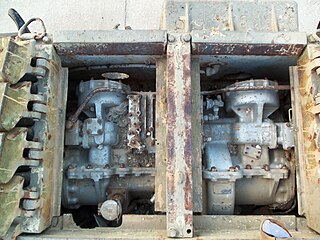 W
WA cross-drive steering transmission is a transmission which is used in tracked vehicles to allow precise and energy efficient steering.
 W
WA diesel–electric transmission, or diesel–electric powertrain is a transmission system for vehicles powered by diesel engines in road, rail, and marine transport. Diesel–electric transmission is based on petrol–electric transmission, a very similar transmission system used for petrol engines.
 W
WA differential is a gear train with three shafts that has the property that the rotational speed of one shaft is the average of the speeds of the others, or a fixed multiple of that average.
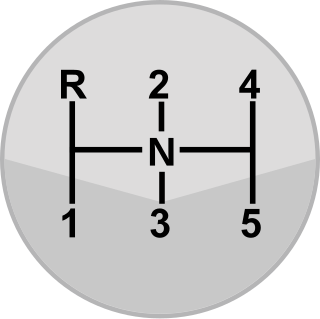 W
WA dog-leg gearbox is a manual transmission shift pattern distinguished by an up-over-up shift between first and second gear. The layout derives its name from a dog's hind leg, with its sharp angles. Dog leg gearboxes have fallen out of fashion primarily because most manual performance cars now have six-speed gearboxes, which are unsuited to the dog-leg layout.
 W
WA dual-clutch transmission (DCT) is a type of multi-speed vehicle transmission system, that uses two separate clutches for odd and even gear sets. The design is often similar to two separate manual transmissions with their respective clutches contained within one housing, and working as one unit. In car and truck applications, the DCT functions as an automatic transmission, requiring no driver input to change gears.
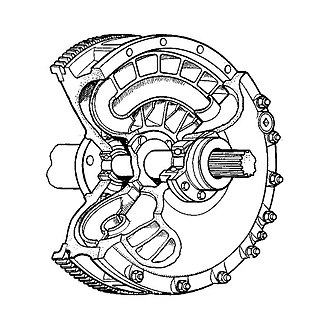 W
WA fluid coupling or hydraulic coupling is a hydrodynamic or 'hydrokinetic' device used to transmit rotating mechanical power. It has been used in automobile transmissions as an alternative to a mechanical clutch. It also has widespread application in marine and industrial machine drives, where variable speed operation and controlled start-up without shock loading of the power transmission system is essential.
 W
WIn mechanical or automotive engineering, a freewheel or overrunning clutch is a device in a transmission that disengages the driveshaft from the driven shaft when the driven shaft rotates faster than the driveshaft. An overdrive is sometimes mistakenly called a freewheel, but is otherwise unrelated.
 W
WA friction drive or friction engine is a type of transmission that utilises two wheels in the transmission to transfer power to the driving wheels rather than a chain and sprockets system. This kind of transmission is often used on scooters, mainly go-peds, in place of a chain. The problem with this type of drive system is they are not very efficient, since the output wheel has width, the area of contact is spread across various radii on the primary disc. Because the tangential velocity varies as radius varies, the system must overcome velocity differentials across the surface. The compromise is slippage of the leather to metal contact area which creates friction, which in turn converts much of the energy transfer of this system into heat. Heat generation also requires a cooling system to keep the transmission working effectively.
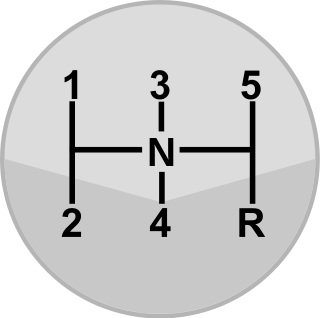 W
WA gear stick, gear lever, gearshift or shifter is a metal lever attached to the shift assembly in an automobile transmission. The term gear stick mostly refers to the shift lever of a manual transmission, while in an automatic transmission, a similar lever is known as a gear selector. A gear stick will normally be used to change gear whilst depressing the clutch pedal with the left foot to disengage the engine from the drivetrain and wheels. Automatic transmission vehicles, including hydraulic automatic transmissions, automated manual and older Semi-automatic transmissions, like VW Autostick, and those with continuously variable transmissions, do not require a physical clutch pedal.
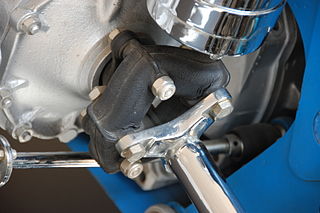 W
WA giubo, also known as a flex disc, and sometimes misspelled as guibo, is a flexible coupling used to transmit rotational torque between the drive shaft and the companion flange on mechanical devices, such as an automobile engine.
 W
WAn H-drive drivetrain is a system used for heavy off-road vehicles with 6×6 or 8×8 drive to supply power to each wheel station.
 W
WThe Hele-Shaw clutch was an early form of multi-plate wet clutch, in use around 1900. It was named after its inventor, Professor Henry Selby Hele-Shaw, who was noted for his work in viscosity and flows through small gaps between parallel plates. The clutch was innovative in not relying upon friction, as other clutches did.
 W
WThe Hotchkiss drive is a shaft drive form of power transmission. It was the dominant means for front-engine, rear-wheel drive layout cars in the 20th century. The name comes from the French automobile manufacturer Hotchkiss, although other makers, such as Peerless, used similar systems before Hotchkiss.
 W
WHydraulic machines use liquid fluid power to perform work. Heavy construction vehicles are a common example. In this type of machine, hydraulic fluid is pumped to various hydraulic motors and hydraulic cylinders throughout the machine and becomes pressurized according to the resistance present. The fluid is controlled directly or automatically by control valves and distributed through hoses, tubes, or pipes.
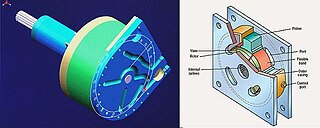 W
WHydristor is a joining of the words 'hydraulic' and 'transistor'. The device invented by Tom Kasmer in 1996 and is based on the dual pressure balanced hydraulic vane pump invented by Harry F. Vickers in 1925.
 W
WA limited-slip differential (LSD) is a type of differential that allows its two output shafts to rotate at different speeds but limits the maximum difference between the two shafts.
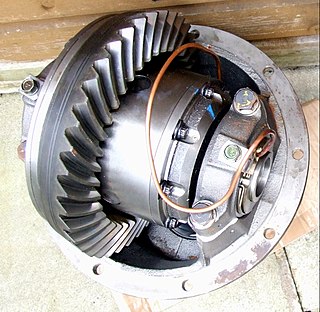 W
WA locking differential is designed to overcome the chief limitation of a standard open differential by essentially "locking" both wheels on an axle together as if on a common shaft. This forces both wheels to turn in unison, regardless of the traction available to either wheel individually.
 W
WA manual transmission is a multi-speed motor vehicle transmission system, where gear changes require the driver to manually select the gears by operating a gear stick and clutch.
 W
WMultitronic is a stepless transmission launched by AUDI AG in late 1999, jointly developed and manufactured by LuK, a division of the Schaeffler Group. The capitalization used is multitronic and is a registered trademark of AUDI AG.
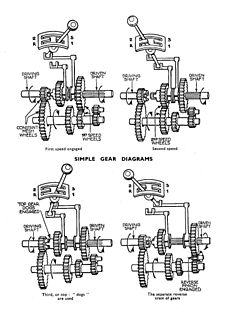 W
WA non-synchronous transmission— also called a crash gearbox— is a form of manual transmission based on gears that do not use synchronizing mechanisms. They require the driver to manually synchronize the transmission's input speed and output speed.
 W
WThe NuVinci Continuously Variable Planetary Transmission is a type of roller-based continuously variable transmission (CVT) manufactured and marketed by the American company Fallbrook Technologies Inc. The design saw its initial market application as a bicycle gearing system, first available in December 2006 in the Netherlands and United States. NuVinci CVP technology is also currently under development for other applications, including wind turbines, light electric vehicles, outdoor power equipment, and automotive front-end accessory drives.
 W
WOverdrive is the operation of an automobile cruising at sustained speed with reduced engine revolutions per minute (RPM), leading to better fuel consumption, lower noise, and lower wear. Use of the term is confused, as it is applied to several different, but related, meanings.
 W
WA parking pawl is a device fitted to a motor vehicle's automatic transmission in order for it to lock-up the transmission. It is engaged when the transmission shift lever selector is placed in the Park position, which is always the first position in all cars sold in the United States since 1965 through SAE J915, and in most other vehicles worldwide.
 W
WPortal axles are an off-road vehicle suspension and drive technology where the axle tube or the half-shaft is off-set from – usually above – the center of the wheel hub and where driving power is transferred to each wheel via a simple gearbox, built onto each hub. This gives two advantages: ground clearance is increased, particularly beneath the low-slung differential housing of the main axles — and secondly, any hub reduction gearing allows the axle halfshafts to drive the same power but at reduced torque. This reduces load on the axle crownwheel and differential.
 W
WA preselector gearbox is a type of manual transmission mostly used on passenger cars and racing cars in the 1930s, in buses from 1940-1960 and in armoured vehicles from the 1930s to the 1970s. The defining characteristic of a preselector gearbox is that the gear shift lever allowed the driver to "pre-select" the next gear, usually with the transmission remaining in the current gear until the driver pressed the "gear change pedal" at the desired time.
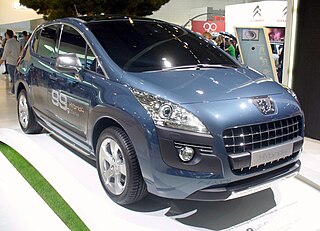 W
WThis article is about the 1st gen HYbrid4 system (2011-2016).
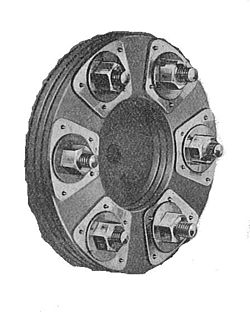 W
WA rag joint refers to certain flexible joints found on automobiles and other machines. They are typically found on steering shafts that connect the steering wheel to the steering gear input shaft, usually at the steering gear end. They provide a small amount of flex for a steering shaft within a few degrees of the same plane as the steering gear input shaft. It also provides some damping of vibration coming from the steering system, providing some isolation for the steering wheel.
 W
WThe Ravigneaux gearset is a double planetary gear set, invented by Pol Ravigneaux, who filed a patent application on July 28, 1949, in Neuilly-sur-Seine France. This planetary gear set, commonly used in automatic transmissions, is constructed from two gear pairs, ring–planet and planet–planet.
 W
WSaxomat was a type of automatic clutch available as an option on Fiat 1800, Lancia Flaminia, Saab 93, Borgward Isabella, Goliath/Hansa 1100, Auto Union 1000, Ford Taunus, Trabant, other than some models from BMW, Opel, Steyr-Puch, NSU, Glas, Wartburg and Volkswagen. Opel sold it as Olymat; Trabant and Wartburg named the system Hycomat. The Hydrak, used in some Mercedes-Benz vehicles between 1957 and 1961, was a similar system with a hydrodynamic torque converter in place of the Saxomat's centrifugal clutch, this H.T.C. system was standard on NSU Ro 80 and was optional on the Porsche 911 (Sportomatic). The system also reappeared in the 1990s as Saab Sensonic, but Saab shelved that technology since 1998. Hyundai also reintroduced similar concept as the Intelligent Manual Transmission (iMT) in 2020 with the latest generation Hyundai i20.
 W
WA preselector gearbox is a type of manual transmission mostly used on passenger cars and racing cars in the 1930s, in buses from 1940-1960 and in armoured vehicles from the 1930s to the 1970s. The defining characteristic of a preselector gearbox is that the gear shift lever allowed the driver to "pre-select" the next gear, usually with the transmission remaining in the current gear until the driver pressed the "gear change pedal" at the desired time.
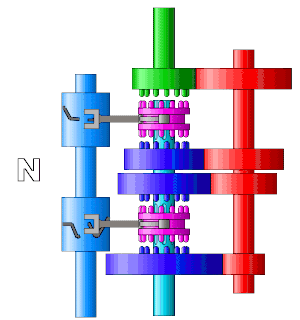 W
WA sequential manual transmission, also known as a sequential gearbox, or a sequential transmission, is a type of non-synchronous manual transmission used mostly for motorcycles and racing cars. It produces faster shift times than traditional synchronized manual transmissions, and restricts the driver to selecting either the next or previous gear, in a successive order.
 W
WShift-by-wire is the system by which the transmission modes are engaged/changed in an automobile through electronic controls without any mechanical linkage between the gear shifting lever and the transmission. The transmission shifting was traditionally accomplished by mechanical links to put the vehicle in Park, Reverse, Neutral, and Drive positions through a lever mounted on the steering column or a gear shifter near the center console.
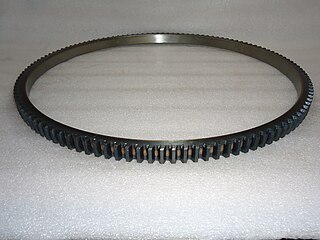 W
WA starter ring gear is a part attached to an internal combustion engine that is part of the assembly which transfers the torque from the starter motor to the engine's crankshaft, in order to start the engine. The starter ring gear is usually made from medium carbon steel.
 W
WA sub transmission is an extra manual or automatic transmission that is independent of the main transmission. In a four-wheel drive, an extra gear stick is often provided to transfer torque when needed and to put the vehicle into low range. Sub transmissions are used in a few motorcycles, such as the Honda CB900C and the Honda CT110. In the Mitsubishi Cordia, a "Super Shift 4x2" sub transmission was adopted, doubling the number of 4-speed main transmission gears.
 W
WSuper Select is the brand name of a four-wheel drive system produced by Mitsubishi Motors, used worldwide except for North America, where it was initially known as Active-Trac. It was first introduced in 1991 with the then-new second generation of the Mitsubishi Pajero.
 W
WA torque converter is a type of fluid coupling which transfers rotating power from a prime mover, like an internal combustion engine, to a rotating driven load. In a vehicle with an automatic transmission, the torque converter connects the power source to the load. It is usually located between the engine's flexplate and the transmission. The equivalent location in a manual transmission would be the mechanical clutch.
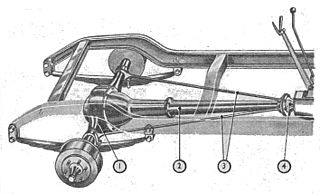 W
WA torque tube system is a power transmission and braking technology, that involves a stationary housing around the drive shaft, often used in automobiles with a front engine and rear drive, and rear brakes. The torque tube consists of a large diameter stationary housing between the transmission and rear end that fully encloses a rotating tubular steel or small-diameter solid drive shaft that transmits the power of the engine to a regular or limited-slip differential. The purpose of a torque tube is to hold the rear end in place during acceleration and braking. Otherwise, the axle housing would suffer axle wrap, such that the front of the differential would lift up excessively during acceleration and sink down during braking. Its use is not as widespread in modern automobiles as is the Hotchkiss drive, which holds the rear end in place and prevents it from flipping up or down, during acceleration and braking, by anchoring the axle housings to the leaf springs using spring perches.
 W
WTorsen Torque-Sensing is a type of limited-slip differential used in automobiles.
 W
WConstant-velocity joints allow a drive shaft to transmit power through a variable angle, at constant rotational speed, without an appreciable increase in friction or play. They are mainly used in front wheel drive vehicles. Modern rear wheel drive cars with independent rear suspension typically use CV joints at the ends of the rear axle halfshafts and increasingly use them on the drive shaft.
 W
WThe Trado was a truck manufactured by DAF in the Netherlands.
 W
WA transaxle is a single mechanical device which combines the functions of an automobile's transmission, axle, and differential into one integrated assembly. It can be produced in both manual and automatic versions.
 W
WA universal joint is a joint or coupling connecting rigid rods whose axes are inclined to each other, and is commonly used in shafts that transmit rotary motion. It consists of a pair of hinges located close together, oriented at 90° to each other, connected by a cross shaft. The universal joint is not a constant-velocity joint.
 W
WVariomatic is the continuously variable transmission (CVT) of the Dutch car manufacturer DAF, originally developed by Hub van Doorne. It is a stepless, fully-automatic transmission, consisting of a V-shaped drive-belt, and two pulleys, each of two cones, whose effective diameter can be changed so that the "V" belt runs nearer the spindle or nearer the rim, depending on the separation of the cones. These are synchronized so that the belt always remains at the same optimal tension.
 W
WThe Voith DIWA automotive transmission was specifically designed by Voith primarily for city-buses and suburban buses. The transmission utilizes a Differential-Wandler (Converter) or DIWA which replaces two gears which would be used on a conventional transmission. It has several generations - all of the automatic transmission type with many variants.